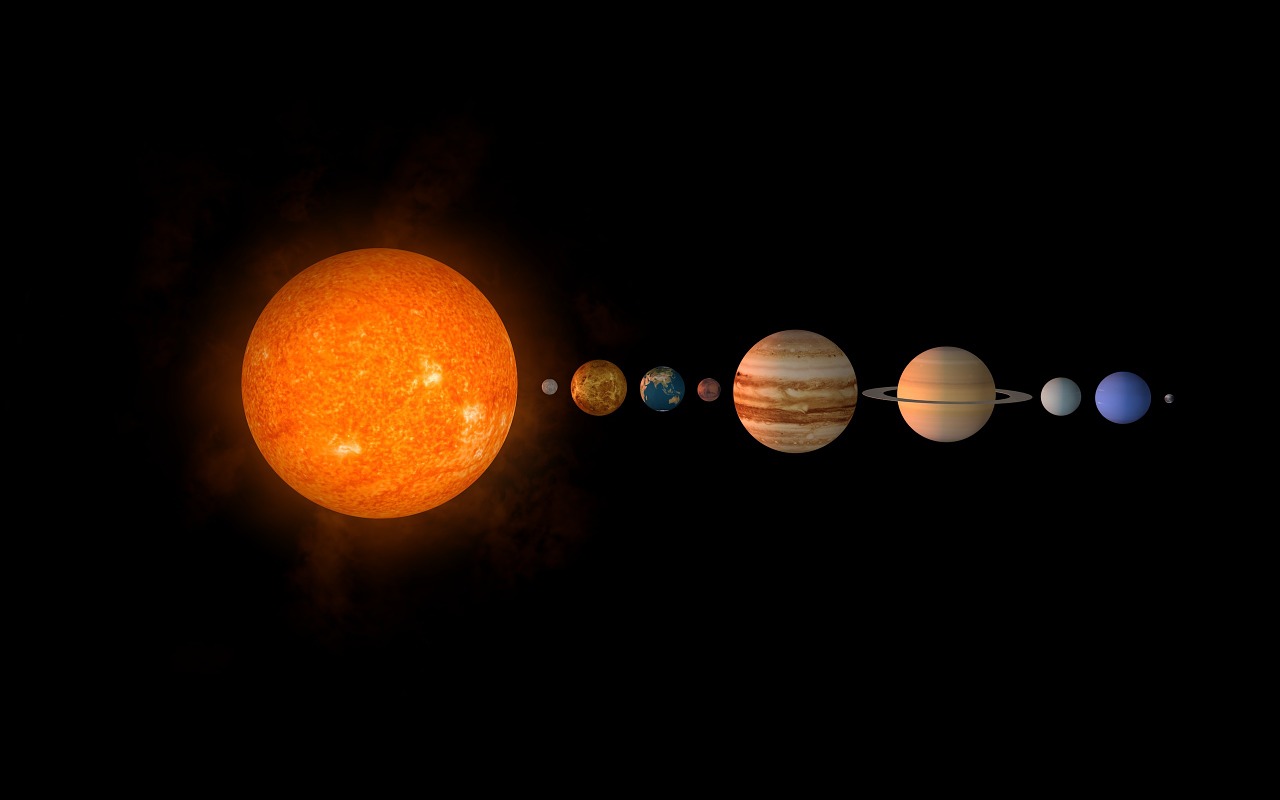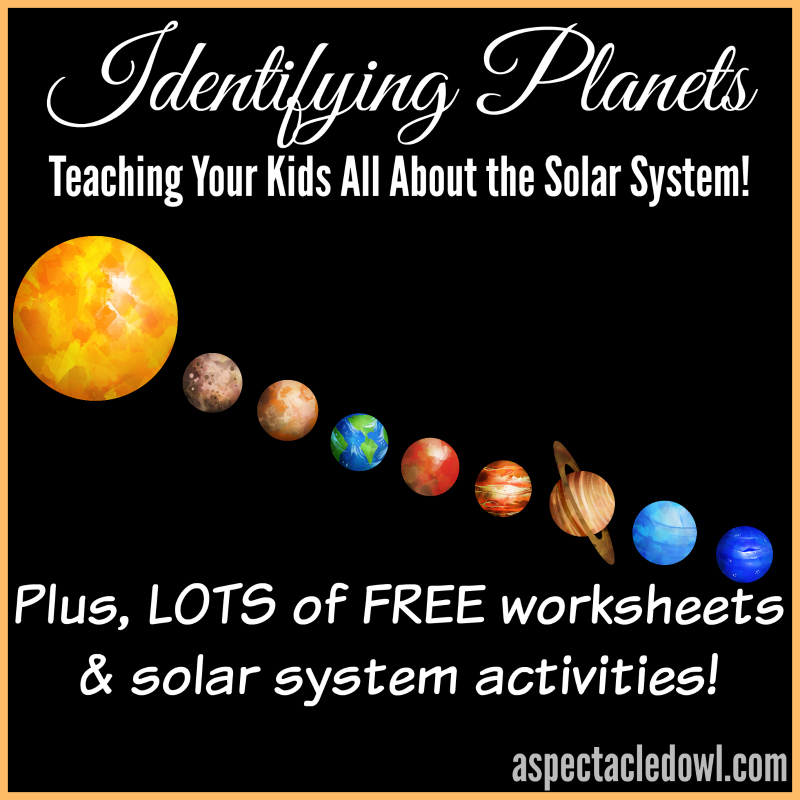My daughter has always loved learning about the space and all kinds of solar system facts. My boys do too, but my daughter really loves learning about galaxies, planets, asteroids and finds it all so fascinating. Our Solar system consists of 8 planets that orbit the Sun. There used to be nine planets in our solar system, Pluto is also out there in the solar system, however it no longer qualifies to be a planet technically, dropping the number to eight. When you’re young, or even as an adult you may not know a whole lot about each planet and it may be difficult to distinguish them from one another. There are so many different characteristics of each planet as far as looks, temperature, and so many other things! So let’s jump right into learning all about our Solar System!
Identifying Planets: Teaching Your Kids Solar System Facts
The Sun: Let’s start with the Sun. Although it is not a planet, it does play a huge role in our lives and our Solar System. I mean it does take up 99.8% of the total mass of the entire solar system! The Sun is actually a very large star. The sun is 1,390,000 km in diameter, it’s mass is 1.989e30 kg, and the temperature of the sun is 5,800 K at the surface, and 15,600,000 K at the core. The sun consists of 70% Hydrogen, 28% helium, and about 2% assorted metals. (K stands for Kelvin. If you’d like to convert that, you can do that here)
Mercury: Mercury is the closest planet to the Sun at 57,910,000 km from it. This planet is the smallest of the eight in our system, at a diameter of 4,880 km and it’s mass is 3.30e23 kg. Mercury varies drastictly in it’s temperature, ranging from 90 K to 700 K. Mercury is covered with craters and it is a gray-blue in color. Since it is so small, it orbits the sun much quicker than the other planets, going around every 88 Earth Days.
Venus: Venus is the next closest planet to the Sun at 108,200,000 km from the Sun. It is 12,103.6 km in diameter and it has a mass of 4.869e24 kg. Venus is a beautiful, bright orange color. It is the third brightest object in the sky, aside from the Sun and the Moon. Venus has been known as Earth’s “sister” planet because they have very similar atmospheres. A fun fact to know it that time is very slow on Venus, 1 day on Venus is 243 Earth Days!
Earth: Our next planet is our home, Mother Earth! This is the third closest planet to the Sun, resting 149,600,000 km from the Sun. It’s diameter is 12,756.3 km and has a mass of 5.972e24 kg. 71% of Earth is covered with water! A cool thing about Earth is that it is the only planet in our solar system that water can exist on the surface of the planet. Earth is characterized as being mostly blue due to the high amount of water, with patches of brown/green that are land. It takes Earth 365 days to orbit the sun, resulting in 1 year of Earth time!
Mars: Mars is the fourth closest planet to the Sun at 227,940,000 km from Sun, it’s diameter is 6,794 km, and it’s mass is 6.4219e23 kg. Mars has commonly been referred to as the Red planet, based off of it’s red color. Mars has a big fluctuation of temperature. It averages around 218 K, but ranges as low as 140 K up to 300 K. Mars is very small in comparison to Earth and it is often found to be a hard planet to study because it is so small.
Jupiter: Jupiter is the fifth planet from the Sun. It orbits 778,330,000 km from the Sun. It’s diameter is 142,984 km and it’s mass is 1.900e27 kg. This planet is the largest in our Solar System by mass, volume, and surface area. Jupiter is the fourth brightest object in the sky behind the Sun, the Moon, and Venus. Jupiter is known as a gas planet, being compiled of about 90% hydrogen and 10% helium. Something you may not know is that like Saturn, Jupiter actually does have rings around the planet, but they are very faint and difficult to see.
Saturn: Saturn is the sixth planet from the Sun, being located 1,429,400,000 km from the Sun. It’s diameter is 120,536 km and it’s mass is 5.68e26 kg. Saturn is known for being the planet with the rings around it. Like Jupiter, Saturn is also a gas planet, consisting of 75% hydrogen, and 25% helium. The interior of Saturn is extremely hot at 12,000 K at the core. Using proper equipment, from Earth you can see two very prominent rings and one faint ring when observing Saturn.
Uranus: Uranus is the second furthest planet from the Sun. It sits at 2,870,9990,000 km from the Sun. It has a diameter of 51,118 km and a mass of 8.683e25 kg. Uranus is known for it’s blue color. Unlike most planets that spin on an axis, Uranus actually spins almost perpendicular to it’s ecliptic. Uranus is made up of a lot of rock and various types of ice. It is a gas planet, like Jupiter and Saturn but only has about 15% hydrogen and a little bit of helium. Uranus also has rings around the planet, but are also very faint like Jupiter.
Neptune: Lastly, Neptune, the furthest planet from the Sun at 4,504,000,000 km from the Sun. It’s diameter is 49,532 km and it’s mass is 1.02847e26 kg. Neptune is another gas planet, built of many ices and rock with about 15% hydrogen and a little hydrogen, like Uranus. It also has rapid winds that are the fastest in the solar system, sometimes reaching 2000 km/hour. Like the other gas planets, Neptune also has rings but they are very dark and hard to see.
There we go! This is all about our planets and our solar system! It’s a lot of information, but it is all so interesting and there is so much more to know! If you’re interested in studying more solar system facts with your kids or doing a unit study with them, here are some great worksheets and activities to get you started:
- Solar System Worksheets for K-6th grade (25 pages) from 123 Homeschool 4 Me
- Solar System Worksheets from Itsy Bitsy Fun
- Solar System Unit Study from Homeschool Giveaways (you will have to sign up for a newsletter for this 50-page unit study)
- Solar System Printables from 3 Boys and a Dog
- Solar System – Learning Pack for Preschool, Kindergarten, and 1st Grade from 123 Homeschool 4 Me
- Free Astronomy Home Study from The Natural Homeschool (sign up for newsletter is required)
- Free Planets Mini Book from 123 Homeschool 4 Me
- Solar System Worksheet Packet for 1st-3rd graders from The Happy Housewife
- Printable Space Mazes from Kids Activities Blog
- Planets Do-a-Dot Printables from gift of Curiousity



there is a lot of information on of the solar system that I even do not know before. Thank you for sharing! 🙂
Thank you for including us on your list! 😉